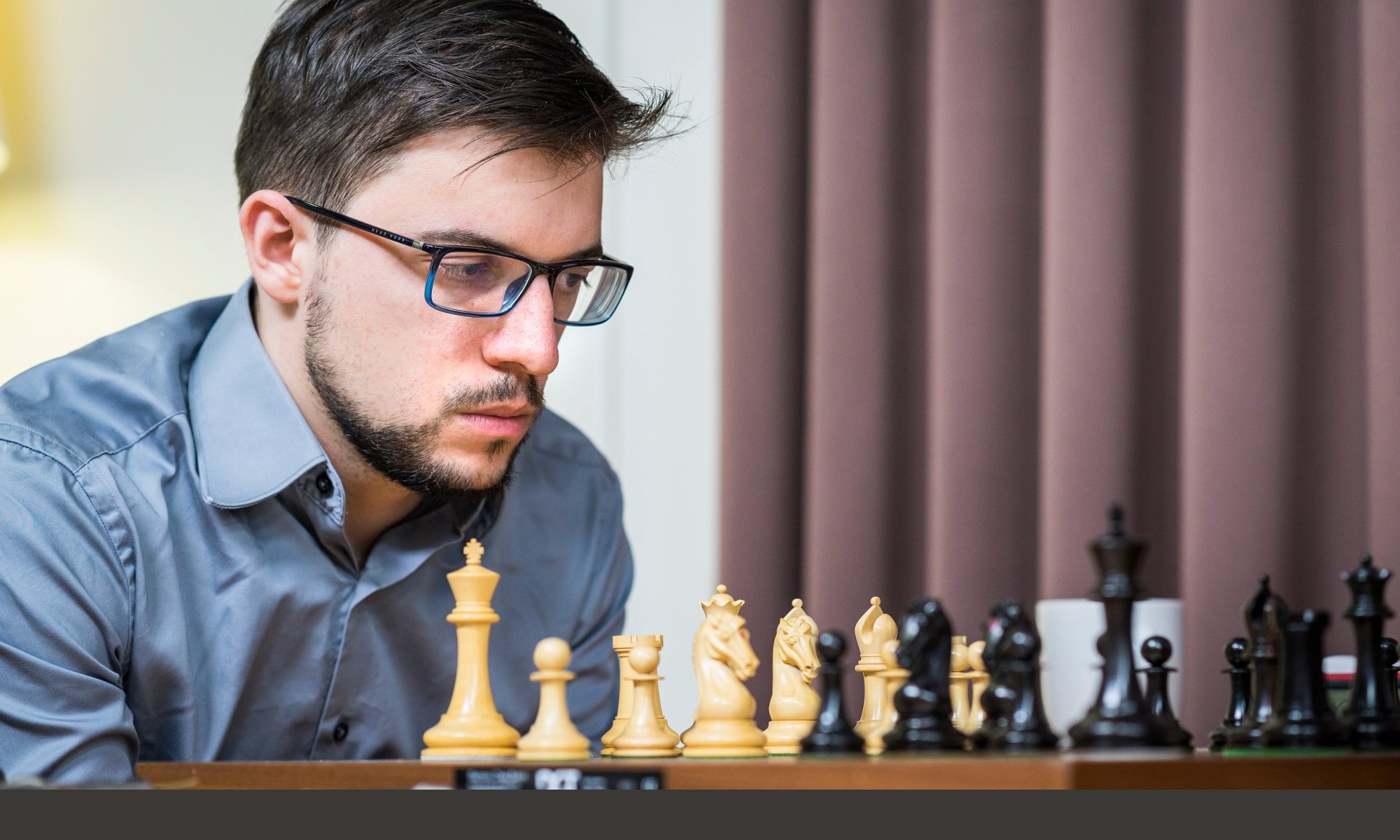I arrived early in the United States, where I spent a few days running simultaneous displays in the New York area, before heading to Saint Louis, where I had time to accomodate before the traditional Rapid & Blitz and the Sinquefield Cup following it. The line-up was fairly familiar, except that in the Rapid & Blitz, there were a few American players who don’t get the chance to play this type of tournament very often, notably Sam Sevian, Ray Robson and Le Quang Liem (who is Vietnamese, but lives in the USA). It was fun, and the field was a little more varied than usual, more like that of the US championship.
In the Rapid tournament, I finished undefeated (8 draws and one win), which is perhaps a first for me in a 9-round rapid! Even so, there were a few missed opportunities, and a few topsy turvy games that could have gone either way.
In blitz, I had a very good first day and a very bad second, eventually finishing 2nd behind Caruana ; which didn’t satisfy me at the time, but it was nonetheless a good operation if you take into consideration qualifying for next year’s Grand Chess Tour (the top three finishers automatically qualify). My ticket was then validated at the Sinquefield Cup with 8 draws (following Duda’s withdrawal after the first round). It was a bit of a dull tournament, I admit, but it was important to secure qualification before anything else, and each draw brought me a little closer to it.
Thanks to a combination of circumstances and favorable results, I even took second place in the final Grand Chess Tour ranking.
After a few days’ rest in Florida, it was off to Toronto for the final of the Champions Chess Tour, with a very impressive and highly competitive field of eight players. The format was 2 rapid games with an eventual Armageddon, which left little room for error. To put it in a nutshell, my overall performance was pretty dreadful, reinforced by the fact that in the Armageddon games, I accumulated a famously low total of 1/6, for a final 6th place (out of 8).
Here are some interesting sequences from my games on the American continent:
Rapid & blitz St-Louis
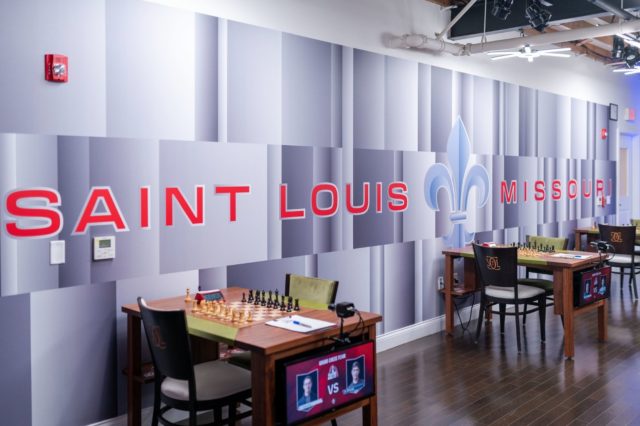
Mvl – So (Blitz, round 7) : 1-0
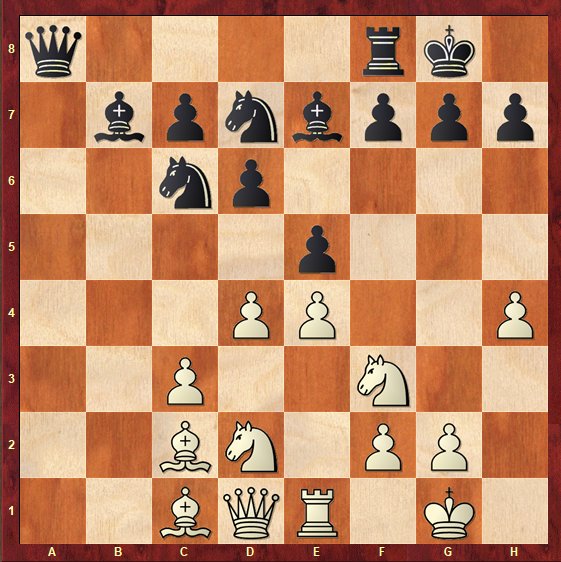
An anti-Marshall I played at the Grand Swiss against Durarbayli, with the idea of 16.h4, which was a bit of a novelty. It’s not necessarily the best move, but it’s blitz and asks questions to black.
The important thing for me was to keep the initiative, which I managed to do on the Kingside.
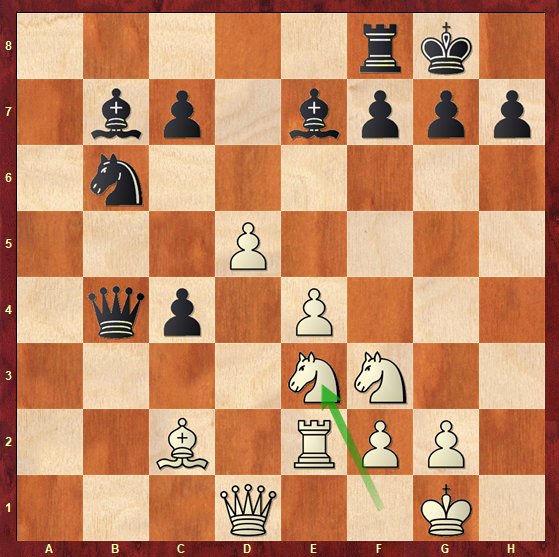
The computer isn’t convinced, because black has an extra pawn, the Bishop pair and the passed c4-pawn, but in practice it’s really not easy.
Black is objectively better, with more possibilities, but I was confident because it’s still very complex and I was playing well that day. So I was ready to take more risks, and it showed in the game.
Here, 28…Rd8? gives White the opportunity to play 29.Nf5 Bf8 30.Qc1. After 30…Bc8 31.Qg5 f6, I sensed something was up, but I only saw the perpetual for a while, then after 30 seconds, I got the lightning! 32.Nh6+ Kh8 33.Ne5! Rd7 (the best defense) 34.Nef7+ Rxf7 35.Nxf7+ Kg8 36.Nh6+ (I hesitated for a moment with 36.Qh4 Kxf7 37.e5 which was also tempting) 36…Kh8 37.Qf4! gxh6 38.Qxf6+.
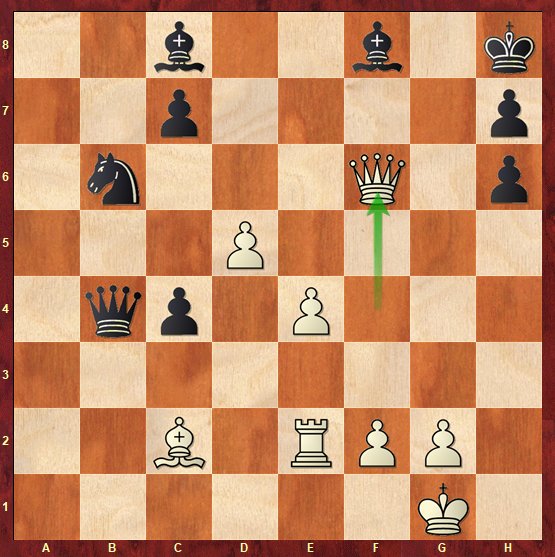
Here, Wesley played the normal 38…Bg7? 39.Qd8+ Qf8 40.Qxc7 Bg4 and I could have concluded with 41.f3! Bd4+ 42.Kh1 without fearing 42…Bxf3+ 43.gxf3 Qxf3+ 44.Rg2 and black’s Queen would only have one or two consolation checks remaining. But I played 41.Re3? allowing 41…Bd4! 42.e5 Nd7 43.e6 Bxe3 44.fxe3 Nf6 which I had assessed as winning in my head, but which in reality squandered the advantage, as indicated by the machine’s 0.00! Fortunately in the game, I was able to advance my e-pawn after 41…Nd7? 42.e5 Qf4 43.Qd8+ Nf8 44.e6 Bh5 45.e7 1-0, and record a high-flying blitz victory!
But the story isn’t over because there was a draw out of nowhere for black in the diagrammed position: after 38…Kg8 39.Re3 Bg4! and I couldn’t have used the g-file because there’s always …h5.
In the second day of blitz, I won only once, against Alireza, and I even shook despite an extra piece and 2 minutes against 10 seconds on the clock! Before the last round, somewhat miraculously I admit, I was just half a point behind Fabiano, so the calculations were easy 😊.

Caruana – Mvl (Blitz, round 18) : ½
I had to score with black in order to win the tournament (and a draw was obviously enough for Fabiano); but I also had to be careful not to lose, so as not to risk my place on the Grand Chess Tour podium! So I had to remain capable of drawing at all times. In a Queen’s Gambit Accepted reached after a funny move order, he didn’t exchange the Queens, which he could have done early enough and might have saved him some trouble. I managed to get my pieces in place, but there was no obvious way to progress. Nevertheless, I pushed hard and managed to win a pawn. But in this endgame, playing almost on the increment, we both made mistakes, but it was me who made the last one!
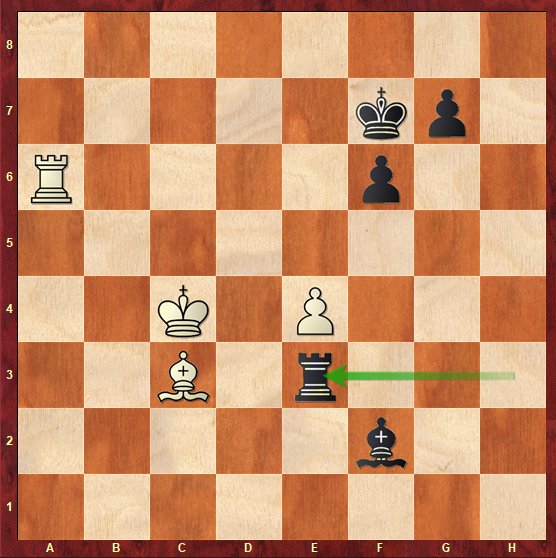
Here, 56.Ra7+ Kg6 57.Re7 preserved the pawn and should have led to a draw, but Fabiano panicked and played 56.e5? fxe5 57.Bd2. Here, I wanted to play 57…Rh3, but for some reason I decided to go to e2 and as I dropped the piece there, I realized that my Rook was trapped after 57…Re2? 58.Kd3.
As a result, Fabiano drew the game and won the tournament.
Sinquefield Cup
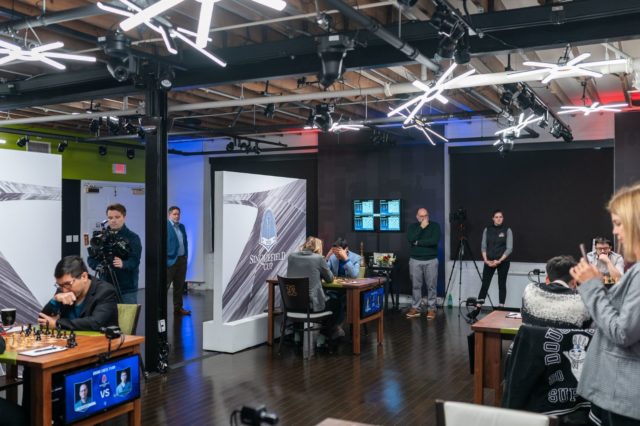
Giri – Mvl (round 4) : ½
Anish managed to surprise me with a specific variation (7.Re1) of the Queen’s Gambit Accepted. As he told me after the game, he spent an enormous amount of time on this position, not expecting it to arrive on the board, but thinking that if it did, he could put on maximum pressure.
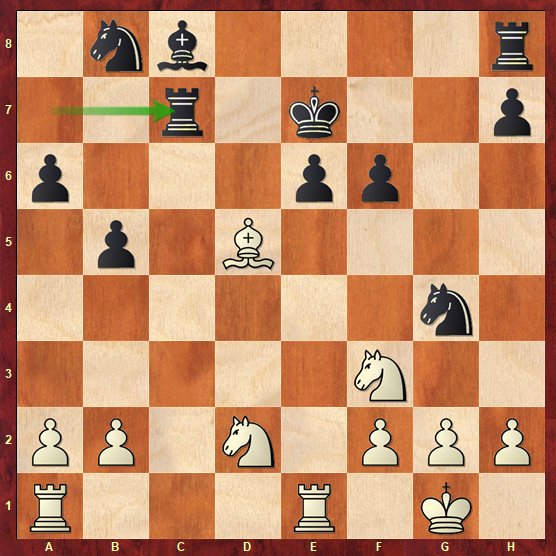
He was hoping I wouldn’t find 18…Rc7, which was a really important move to regain control of the c-file, otherwise his Knight would eventually land on c5. With white’s Rook on c1, my Ra7 wouldn’t have had much future, for example 18…Rd8?! 19.Be4 Kf7 20.Rac1 followed by 21.Nb3 and it becomes very complicated to defend.
Anish was still in his preparation after 19.h3 Nh6 20.Bxe6 Bxe6 21.Nd4 Rc6 22.Nxc6+ Nxc6 23.Rac1 Rc8. The difficulty in these monster preparations, as we are well aware of, is to remember everything. Here he knew there was f4 somewhere. He looked superficially at the move 24.f4? right now, saw no problem and played it; admittedly, it seems to prevent 24…Nf5 because of 25.g4 and 26.f5. He figured I’d have to move my King, but on f7 there’s 25.Ne4 aiming for d6, and if I have to play 24…f5, then my Nh6 is offside. Except that I had anticipated that 24…Nf5! is actually possible, because if 25.g4 Nfd4 26.f5, I have the nice 26…Ne5! and if 27.fxe6? Rxc1!.
What he didn’t remember was that f4 had to be preceded by 24.Rc5! Nf7 and now 25.f4 with an a nice advantage.
Afterwards, I saw all the possibilities he had to force a draw and he didn’t choose any of them. I think he still believed he was better, and wanted to increase the pressure. Quite surprised, I played what seemed to me to be the logical moves, and began to think that I had quite a bit of initiative!
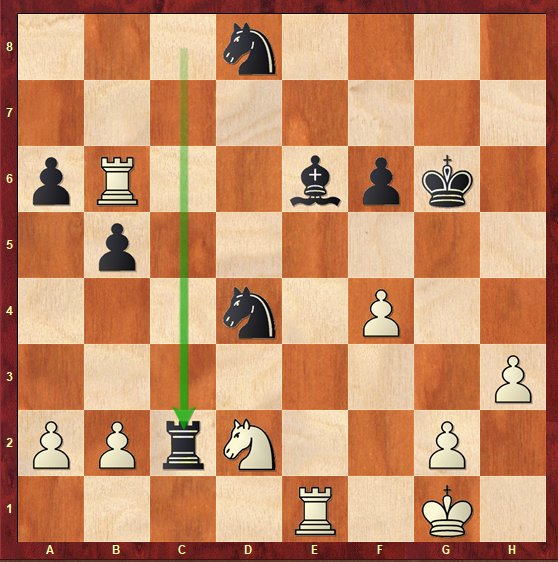
I saw that he could still force the draw (for example 30.Nf3 should be enough), but he didn’t and chose 30.Ne4 instead. I was beginning to think I might have real winning chances 😊.
After 30…N8c6 31.Rxa6?, I saw that 31…Bd5 was a move, but I figured I had time and preferred 31…Rxb2?. After 31…Bd5! I understood I would probably be more than fine, but I didn’t think I’d win at all. As far as I was concerned, Anish was still looking for a win, since he could already have forced a draw three or four times. In fact, as he’d missed many of my moves since 24…Nf5, he was terrified to see all my pieces come out and my attack become hyper-strong. As for me, I could see that I had an attack, but also only two pawns left on the board 😊. Of course, my pieces coordinate well, but I thought that, at worst, he could give away a piece and draw; so I might as well take the b2 pawn first… But in fact, I only realized after the game how crucial the move 31…Bd5! was, allowing the attack to break through in force; I’m threatening 32…Ne2+, but also …f5 or …Kf5 as the case may be.
After 31…Txb2?, Anish thought hard and came up with the sequence 32.f5+! Bxf5 33.Nd6, and instead of continuing to apply pressure with 33…Bd3 or 33…Bd7, I played 33…Bxh3+?! a little too quickly. My idea was that after 34.gxh3 Nf3+ 35.Kf1 Nh2+ 36.Kg1, I’d play 36…Nd4. Unfortunately, I realized too late that after 37.Re3 Ndf3+ 38.Kh1, there was nothing left! So I repeated the position and accepted the draw.
A game that petered out real quick, which is even more obvious after analyzing it in detail…

Toronto, 2023 Champions Chess Tour Final
Mvl – So (Armageddon, round 3) : ½
Between games, we had no time, and in any case no access to computers, so preparation was very limited 😊. In this tie-break, I decided to play 1.c4 by feel. I think I negotiated the opening rather well and got a playable position. What’s more, Wesley didn’t have much time on the clock (he’d bid less than 9′ against 15), so I thought I had a good chance. Then I forgot a two-move sequence for black, after which I immediately found myself in trouble. Nevertheless, I found some resources and arrived at the following position:
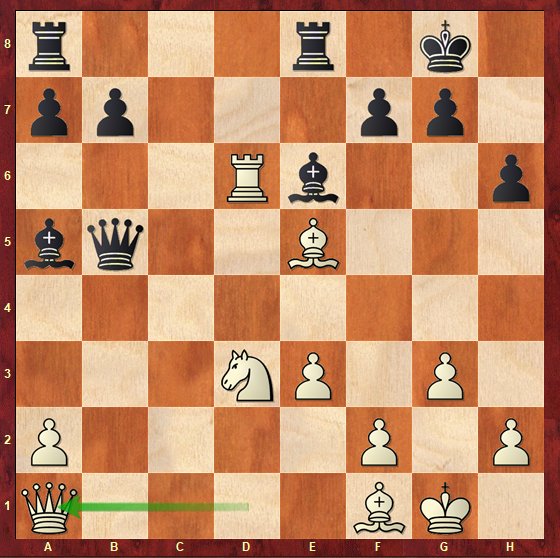
Here, I was quite happy because I’m threatening 25.Bxg7 as well as 25.a4. Now he played 24…f6? and I spent all my time on 25.Bxf6 gxf6 26.Nf4 variation, which I couldn’t make work. And I forgot that 25.a4! was even a possibility; an option that was almost winning after 25…Qc4 (25…Qb3 26.Nc5) 26.Nf4 Qb3 and now 27.Bxf6!. I then went back to 25.Bxf6? gxf6 26.Qxf6 after quite a long thought, and finally played this line. Unfortunately, I forgot that after 26…Qf5 27.Qxh6, there’s 27…Bc3! which seals the deal, and my attack flounders.
Somewhat miraculously, Wesley left me some small practical chances with Rook, Knight and 3 pawns against Queen and Rook, which is obviously objectively lost.
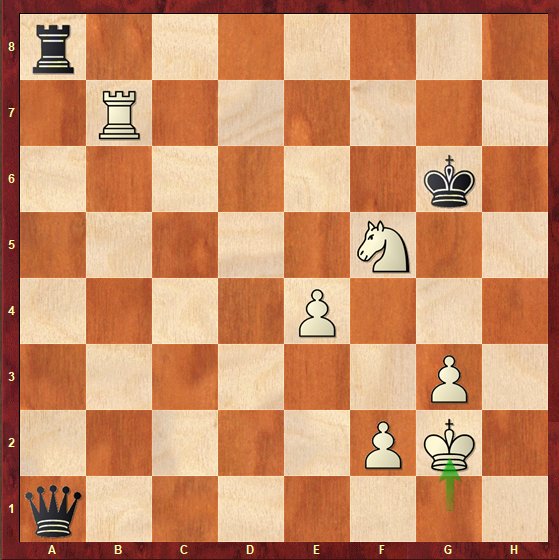
But it’s an Armaggedon and there’s no time added before the 61st move, and it’s only a one-second increment from there. Little by little, I managed to organize myself, to advance my pawns. I pushed them as far as I could, even if my King became a little vulnerable. I sensed that he wasn’t very serene. But it’s too hard to create real threats with this material imbalance, and I really did what I could under the circumstances.
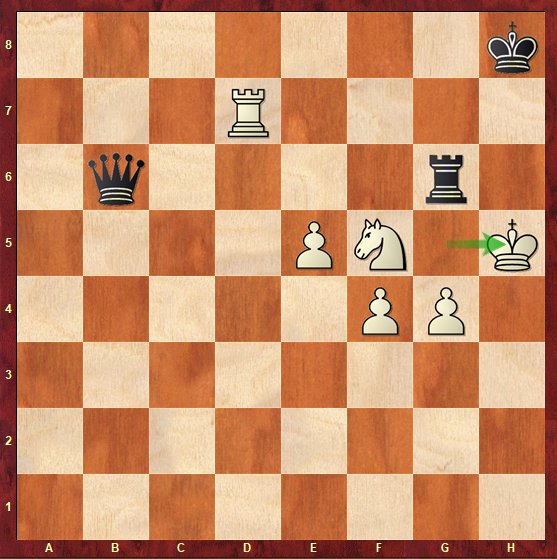
Here he found 73…Rxg4 74.Kxg4 Qg6+ to stop my pawn avalanche and guarantee the draw.
This game, and even more so the one before it which I lost with white when all I needed was a draw, knocked me on the head, and was undoubtedly a turning point in the tournament.

Mvl – Nakamura (Armageddon, losers brackets)
Then I had my last chance against Nakamura. We repeated what we’d played in the first Armageddon of the round robin. Unfortunately, I couldn’t remember the details, as I thought he’d move on to another line. The start of the game was clearly bad for me…
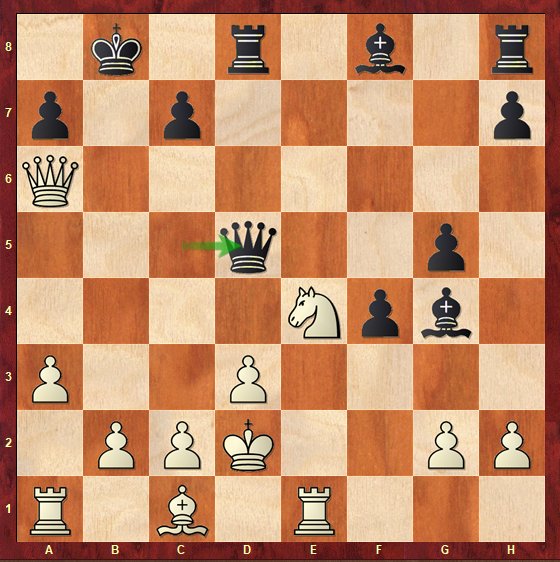
Here, I thought of 21.b3, which didn’t satisfy me. So I played 21.a4, but immediately saw that 21…c6! could be very strong. After 22.b3, he had the sequence 22…Bb4+! 23.c3 Qxb3 24.cxb4 Bc8!. A not-so-hidden point objectively, even if this kind of diagonal retreat move is always difficult; in any case, it was missed by both of us 😊.
After 22…Bg7? 23.Rb1? (23.c3 first was compulsory, you can’t leave the d4 square to black’s Bishop) 23…Rhe8 24.Qc4, miraculously, he played 24…Qa5+? a little too quickly, which left me with a huge opportunity (24…Bd4! was extremely strong, with the idea 25…Be3+). After 25.b4! I suddenly felt better. Then I missed out on a few probably superior options, but still got the following beautiful position:
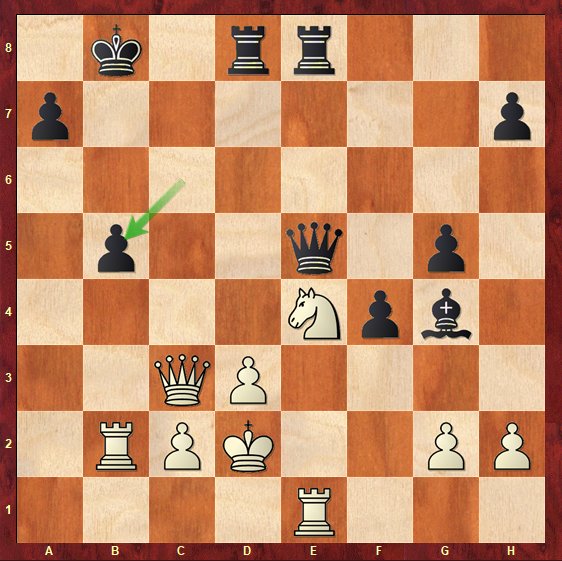
I played 30.Ra1? a tempo here because it was the move I had already planned. Obviously, if 30…Qxe4? I have 31.Rxb5+ Ka8 32.Rxa7+ and I mate. The idea was also that if he exchanged on c3, I’d take back with the Knight and regain b5. But I missed his excellent 30…Rd5! 31.Qa5?? and even though we both missed the mate in 6 that follows 31…Rxd3+!, he played 31…Rd7, kept everything under control and forced a draw from a strong position. Too bad I didn’t take the time to find the simple 30.Qxe5+! Rxe5 31.Nf6 Rxe1 32.Rxb5+ Kc7 33.Kxe1 followed by 34.Rxg5 with a completely winning endgame, which would have given me another chance in the tournament…
In any case, given my level of play, even if I’d won that game, it would have been more of a reprieve than anything else (even if you’re never safe from a good surprise 😊). But it still hurts. This game is a reflection of my performance in the tournament, a rather poor time management throughout, as I really played too fast, and difficulties in the Armageddon games that were glaring.
The year 2023 was a bad one from the perspective of then World rankings, because I was hoping for a rebound of my Elo, which didn’t materialize.
In terms of titles, I won the AI Cup and the Tata Steel India in Rapid, which is still a pretty big achievement, as are my 3 victories over Magnus Carlsen.
For the rest, in classical games, there was a lack of reference tournaments; the World Cup ended too soon. And as for the 2 classic Grand Chess Tour tournaments (Bucharest and Sinquefield Cup), the overall results were fairly neutral, with a lot of draws (+1, -1, =15 on the whole).
But quite a lot has been done in 2023, and although it’s sometimes gone wrong, I’m still quite optimistic about next year. Apart from the Leagues, I’ll have some time without a major tournament between January and April, which will allow me to work on what I still need to improve so that I’m really ready for a big 2024 season.
Next up, the Rapid & Blitz World Championships, to be held December 26-30 in Samarkand (Uzbekistan). I’m still counting on this last event of 2023, so see you in the next episode 😊.
Maxime’s games in St Louis (the Sinquefield Cup):
Maxime’s rapid games in St Louis:
Maxime’s blitz games in St Louis:
Maxime’s games in Toronto (Champions Chess Tour Final):
Statement from Maxime Vachier-Lagrave
Let’s be frank: the series of last-minute, tailor-made mini-matches organized in Chartres for Alireza (Firoujza), with the clear aim of qualifying him for the Candidates, does not correspond to my sporting values. However, I do wonder about the outcry this is causing when similar tournaments have been set up to help other players qualify for the Candidates – sometimes successfully so – without causing such a stir, and even without any reaction from the highest authorities. Suspicions of fixed games have even arisen, but as with accusations of cheating, we’d have to have the evidence to back them up. Of course, I’m counting on Laurent Freyd, the on-site referee, and the various authorities, to check that the games played in Chartres respect the integrity of the game.
In my opinion, this unpleasant situation is above all the result of a serious error of FIDE in the construction and wording of its rules. It is these shortcomings that offer players the opportunity to exploit loopholes, and this problem must be resolved as quickly as possible with a view to the next world championship cycle.
Without going back over the ways of qualifying for the Candidates, it would make sense to take into account the Elo performance of the year rather than the Elo rating at a given moment, or the average Elo of the year, which is mathematically unfair. Of course, it would then be necessary to impose clear rules enabling tournaments to be taken into account for the calculation of this annual Elo performance, which would be, for example, a calendar of tournaments set up at the beginning of the year; with perhaps the possibility of adding competitions up to 3 months before the end of the year, by dispensation.
Note that this would in no way affect the calculation of the current Elo ranking.
For many years now, with each qualification cycle, we have seen the rules changed and controversy accumulate. This has to stop, and in my opinion, the creation of a special commission to scrutinize qualification methods for the Candidates would certainly not be a luxury, but rather a necessity imposed by circumstances.
